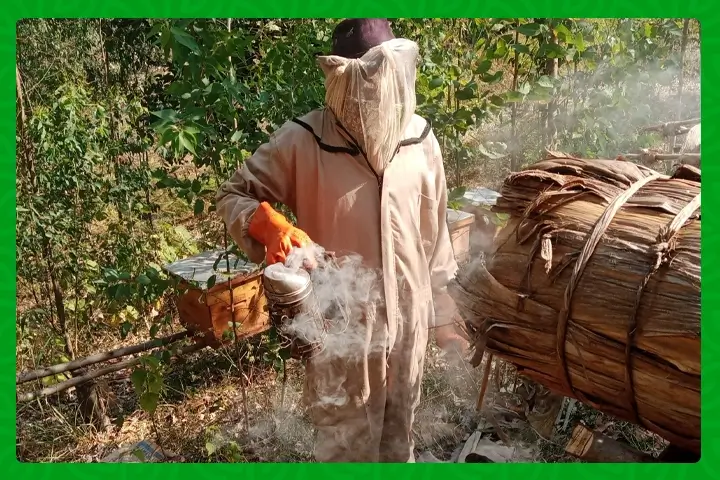
In a visionary move to foster sustainable development and protect local biodiversity, Akagera National Park has unveiled a 120,000-hectare buffer zone aimed at transforming the fortunes of beekeepers in the Eastern Province, particularly in Kayonza. This strategic initiative not only expands the horizons for beekeepers but also acts as a crucial step in curbing poaching and illegal activities within the park.
Expanding Horizons: A Boon for Beekeepers
The newly designated buffer zone is a game-changer for beekeepers in Kayonza, offering an expansive 120,000 hectares of prime land. Fiston Ishimwe, the Park and Community Relations Officer at Akagera National Park, highlighted the significance of this move, stating that the buffer zone can accommodate up to 20,000 beehives, a substantial increase from the current 4,000 in use. This expansion brings exciting prospects for farmers who can now scale up their beekeeping operations.
A Shield for Bees: Protecting Nature’s Pollinators
The buffer zone serves a dual purpose: providing additional space for beekeepers and demarcating park boundaries. Josephine Bagiraneza, Chairperson of COPROMI, a local beekeepers’ cooperative, expressed gratitude for the buffer zone, emphasizing its role in protecting bees from the harmful effects of pesticides. In recent times, pesticides from nearby agricultural fields had led to a significant loss of bees. Initiatives like scheduling pesticide applications in the evening, when bees are less active, showcase the commitment to safeguarding these vital pollinators.
Modernization Beckons: Unlocking the Potential of Eastern Province Honey
Experts, including January Rukwatage from the NGO FIOM, recognize the untapped potential in the beekeeping sector in the Eastern Province. Rukwatage stressed the importance of transitioning from traditional to modern beekeeping practices, employing advanced beehives and management techniques. He highlighted a study revealing a lack of training and skills hindering sector growth and emphasized the need to invest in the unique honey produced in the Eastern Province.
“The natural forests in Kayonza yield a special honey variety with global appeal. Establishing buffer zones between agriculture and beekeeping sites minimizes negative impacts on bees and honey production,” remarked Rukwatage.
Empowering Beekeepers: Overcoming Challenges
Local beekeepers, such as Emmanuel Shumbusho, have faced challenges like insufficient training, limited sites, and a lack of modern equipment leading to low honey production. Shumbusho advocates for a focus on modern beekeeping techniques to enhance productivity and looks forward to ongoing discussions about bee-friendly pesticides. The Kayonza District Mayor, John Bosco Nyemazi, sees the buffer zone as an opportunity for beekeepers to modernize, hinting at plans for a honey collection center to streamline trade and meet growing demand.
Conclusion: A Sweet Future for Kayonza Beekeepers
As the buzz of excitement reverberates through Kayonza, the unveiling of the buffer zone stands as a beacon of hope for beekeepers. With a commitment to sustainability, modernization, and environmental conservation, this initiative is poised to elevate Kayonza’s beekeeping sector to new heights, ensuring a sweeter and more prosperous future for the community. The honey produced in Kayonza is not just a local delicacy; it’s a global treasure waiting to be discovered.
Stay updated with the latest farming tips and agriculture industry news from Africa by subscribing to our newsletter. Don’t miss out on valuable insights and updates. Follow us on Twitter, LinkedIn, and Facebook to join our farming community and stay connected with us.



















